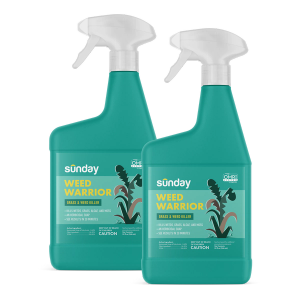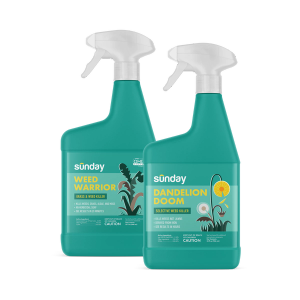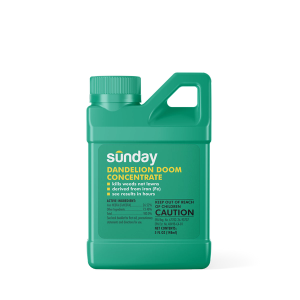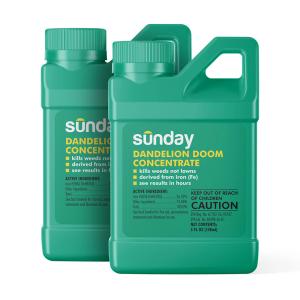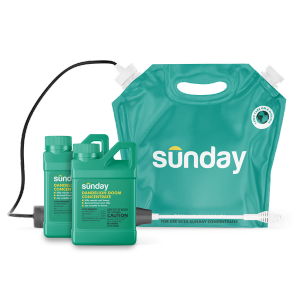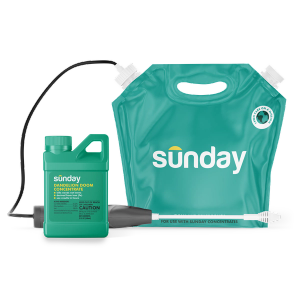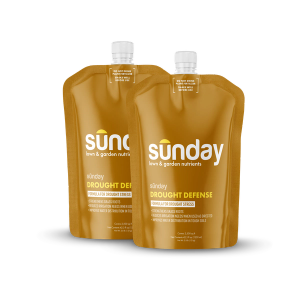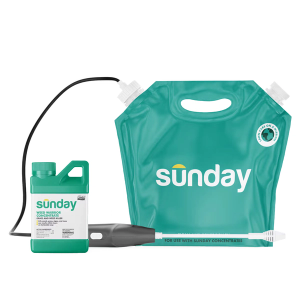What is Integrated Pest Management?
Integrated Pest Management (IPM) is a sustainable lawn care philosophy where prevention is paramount, and any measures taken to suppress the problem minimize risks to people and the environment. The first step in IPM against any pest—including weeds—is promoting a dense, healthy lawn. Weed presence usually indicates an underlying issue. Poor growing conditions for your specific grass type or improper lawn care stress and weaken the lawn, and open up opportunities for weeds to invade.
Here at Sunday, we recommend an IPM approach for weed control, focusing first on prevention, then using hand weeding and modification of the growing conditions to address weed issues before reaching for chemical control. IPM can be used to complement proper lawn care in order to help prevent and treat pesky weeds.
How to use IPM for weed problems
Stop weeds from popping up
The first step for managing weeds is prevention! A dense lawn is a weed-free lawn. Grow a grass species appropriate for your region and climate, overseed your lawn each spring, and make sure you address any underlying issues such as:
- Improper mowing height
- Irrigation mistakes
- Low fertility or nutrient deficiencies
- Compacted soil
- Shade
Keep an eye on the lawn
Take a walk through your lawn and look for small weeds; the sooner you spot them, the easier they are to treat! A stray weed here or there may not be a big issue, but you should set some boundaries. Your tolerance for weeds may depend on aesthetic preferences, how you (and others!) use your lawn, or the specific weed. Can you leave some low-growing clover that blends into the grass? How many crabgrass clumps or sunny dandelions can you tolerate? Preemptive decisions like this make it easier to determine when to act.
Sunday Tip:
Not all weeds are all bad! Many flowering weeds are great for pollinators. Common lawn weeds like dandelions, clovers, and violets are an especially critical food source for pollinators in early spring when many other flowering plants have not yet emerged. Allow these plants to flower, then hand weed before they set seed.
Identify the weed
Different weeds can—and should—be managed differently, so proper weed identification is key to determining the next steps forward.
Remove the weed
Some weeds can be easily pulled by hand, and won’t require any herbicides, while others may require more intensive cultural control to treat underlying drainage, mowing, fertilization, or soil issues. When possible, hand pulling is Sunday’s preferred method—but we get it. Some weeds are really tough to get under control. If you do have stubborn weeds that just won’t go away, try Sunday’s Weed Warrior and Dandelion Doom to help spot-treat those trouble areas.
Record and evaluate
Keep records of when and where weeds appear, what weeds you see, and what treatment actions you take, if any. Then, make sure you evaluate how effective different management approaches are, so you can modify, if needed, in the future.
Sunday Tip:
Patch any bare spots left behind, but first, be sure you’ve solved the underlying environmental issue to make sure your lawn grows back happy and healthy.
Under the IPM approach, it is important to prevent weeds from occurring, hand weed when possible, and use chemical control only when absolutely needed. Following good lawn care practices - proper irrigation, fertilization, mowing, and soil management – will promote healthy grass that better withstands weed pressure.
Cited sources
Calhoun, R.N. Integrated Pest Management for Home Lawns. Michigan State University Extension.
Landschoot, P. Developing an Integrated Turfgrass Pest Management Program. PennState Extension.







